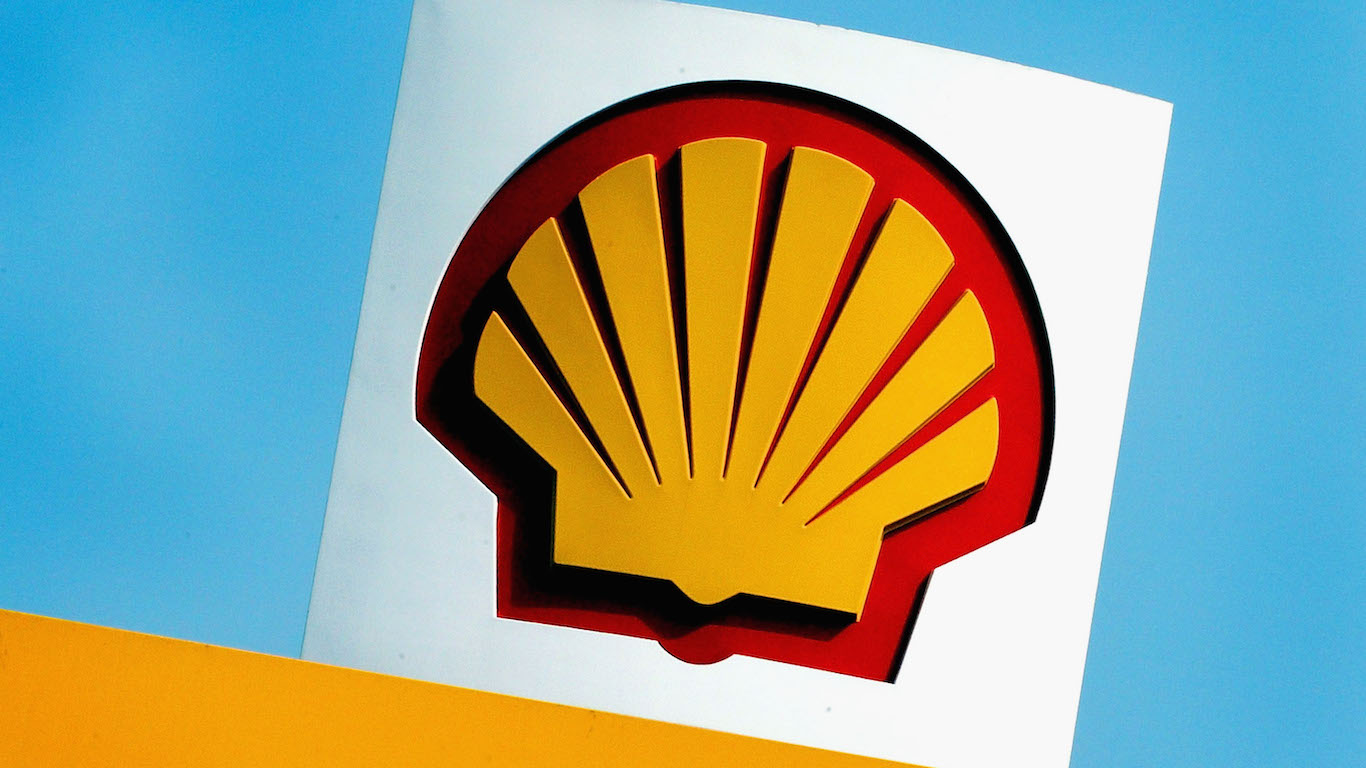
Earnings reports released Tuesday morning were again overwhelmingly positive, with the vast majority of companies reporting profits that beat consensus estimates.
After markets close on Tuesday, four firms we covered in an earlier preview (Activision-Blizzard, Lyft, Occidental Petroleum and Skillz) are due to report results. Before markets open on Wednesday, results will be released by CVS Health, General Motors, Marathon Petroleum and Royal Caribbean.
Here are previews of four companies set to report June-quarter results after Wednesday’s closing bell.
Electronic Arts
Electronic Arts Inc. (NASDAQ: EA) has had a share price gain of about 1% over the past 12 months, but that includes a dip of nearly 18% in mid-November that has led to a bumpy recovery since. For the year to date, shares have slipped by less than 1%. As poor as this is, given the surge in tech stocks in 2020, it is still better than the performance of some of the company’s traditional competitors. Rising competition from the likes of Apple and Netflix in streaming games doesn’t help.
Analysts, however, are bullish on the stock, as 23 of 31 surveyed brokerages rate the shares a Buy or Strong Buy. The remainder have Hold ratings. At the recent price of around $140, the upside potential to the median price target of $166.50 is 19%. At the high price target of $184, upside potential reaches 31%.
Revenue for the company’s first quarter of fiscal 2022 is forecast at $1.28 billion, which would be down nearly 14% sequentially and nearly 8% year over year. Adjusted earnings per share (EPS) are forecast to decline by 48% sequentially and nearly 53% year over year. For fiscal 2022, analysts are looking for EPS of $6.39, an increase of about 12.5% year over year, and revenue of $7.44 billion, up 20%.
The stock currently trades at 22.5 times expected 2022 EPS, 20.2 times estimated 2023 earnings and 17.5 times estimated 2024 earnings. The stock’s 52-week trading range is $110.15 to $150.30. Electronic Arts pays an annual dividend of $0.68 (yield of 0.47%).
Fastly
Fastly Inc. (NYSE: FSLY) operates an edge cloud platform or content delivery network. For the past 12 months, its shares have dropped nearly 52%, and the stock is down 47% so far in 2021. A coding error in the company’s software caused about 85% of Fastly’s customers to lose service in June. That’s the bad news. The good news is that virtually all service was restored in less than an hour.
Analysts are unsure what to make of Fastly. Of 11 brokerages covering the stock, seven have assigned Hold ratings, while the other four are evenly split between Buy and Sell ratings. At a price of around $46.20, the upside potential at the median price target of $50 is 8.2%. At the high target of $60, the upside potential is about 30%.
Second-quarter revenue is forecast to rise by 1.3% sequentially to $85.98 million, compared to the year-ago total of $74.66 million. A per-share loss of $0.18 is forecast, compared with a loss per share of $0.12 in the first quarter and a profit of $0.02 a year ago. For the full fiscal year, analysts are looking for a loss per share of $0.43, compared to a loss of $0.18 a year ago, and revenue of $382.5 million, or 31.5% more year over year.
The company is not expected to post a profit in any of 2021, 2022 or 2023. Fastly’s enterprise value-to-sales multiple is 14.3 for 2021, 11.3 for 2022 and 9.5 for 2023. The company’s 52-week range is $39.47 to 136.50, and the company does not pay a dividend.
Lumen
Telecom services provider Lumen Technologies Inc. (NYSE: LUMN) was known as CenturyLink until last September. For the past 12 months, shares are up 41%, including a 33% jump so far in 2021. The company’s rich dividend is attractive to hedge funds and could attract some attention from retail investors who might be looking to offset some riskier plays.
Analysts are relatively cool to the stock. Of 13 brokerages covering Lumen, six have given the stock a Sell or Strong Sell rating, and another five rate the shares as a Hold. At a price of around $12.50, the stock has outrun its median price target of $12.00. At the high target of $18, the upside potential on the stock is about 46%.
Second-quarter revenue is expected to drop sequentially by 0.8% and year over year by 3.8% to $4.99 million. EPS are forecast at $0.41, down 7.4% sequentially and down a penny year over year. For the full year, EPS are forecast to dip by 1.7% to $1.64 and revenue is expected to fall by 3.6% to $19.96 billion.
Lumen stock trades at 7.6 times expected 2021 EPS and 8.9 times estimated earnings for both 2022 and 2023. The stock’s 52-week range is $8.51 to $16.60. Lumen pays an annual dividend of $1.00 (yield of 8.02%).
MGM Resorts
Resort and casino operator MGM Resorts International (NYSE: MGM) has seen its share price jump by nearly 128% over the past 12 months. The shares gave up about 4.5% in 2020, after recovering from a plunge of around 80% in late March. For 2021 to date, the stock is up about 16.5%. Last week, analysts at Goldman Sachs lifted their rating on the stock from Sell to Neutral, due in part to significant increases in MGM’s share of online sports betting and iGaming.
Of 15 analysts covering the stock, nine rate the shares a Hold, while the others have Buy or Strong Buy ratings. At a price of around $36.70, MGM stock’s potential upside to a median price target of $46 is 25%. At the high price target of $55, the upside potential is almost 50%.
Analysts expect MGM to report second-quarter revenue of $2.17 billion, nearly 32% sequentially and about nine times revenue of $289.8 million in the year-ago quarter. The company is expected to post a loss per share of $0.37 in the quarter, sharply better than the year-ago loss of $1.52 and almost half the first-quarter loss of $0.68 per share. For the full fiscal year, MGM is expected to lose $1.91 per share, compared with a per-share loss of $3.94 in 2020. Revenue is forecast to rise by 73% to $8.93 billion.
MGM stock trades at 148.7 times estimated 2022 earnings and 41.4 times estimated 2023 earnings. The stock’s 52-week range is $16.29 to $45.34, and the company pays an annual dividend of $0.01 (yield of 0.03%).
Uber
Ride-hailing company Uber Technologies Inc. (NYSE: UBER) has posted a share price gain of more than 38% over the past 12 months, including a spike that saw the share price up nearly 24% between January 1 and February 10. For the year to date, though, shares are down nearly 18%. The company is expected to get a boost from increased ridership in the second quarter, but there is some uncertainty going forward due to the surge in infections from the Delta variant of the coronavirus.
Analysts remain strongly bullish on the stock, with 36 of 42 brokerages rating the shares a Buy or Strong Buy. Another five give the stock a Hold rating. At a price of around $41.90, the upside potential based on a median price target of $72 is almost 72%. At the high price target of $80, the potential gain is about 91%.
Revenue is forecast to rise 29.6% sequentially and 67.8% year over year to $3.76 billion. The second-quarter forecast calls for a loss per share of $0.32, compared with EPS of $0.45 in the first quarter and a year-ago loss of $0.65 per share. For the full year, Uber is expected to post a loss per share of $0.52, compared with a loss of $2.86 per share in 2020. Revenue for the fiscal year is expected to rise by 41.5% to $15.76 billion.
With a loss also projected for 2022, the stock trades at 36.7 times estimated 2023 earnings. Uber’s 52-week range is $28.48 to $64.05. The company does not pay a dividend.
In 20 Years, I Haven’t Seen A Cash Back Card This Good
Credit card companies are at war, handing out free rewards and benefits to win the best customers. A good cash back card can be worth thousands of dollars a year in free money, not to mention other perks like travel, insurance, and access to fancy lounges. Our top pick today has pays up to 5% cash back, a $200 bonus on top, and $0 annual fee. Click here to apply before they stop offering rewards this generous.
Flywheel Publishing has partnered with CardRatings for our coverage of credit card products. Flywheel Publishing and CardRatings may receive a commission from card issuers.
Thank you for reading! Have some feedback for us?
Contact the 24/7 Wall St. editorial team.

 24/7 Wall St.
24/7 Wall St. 24/7 Wall St.
24/7 Wall St.



